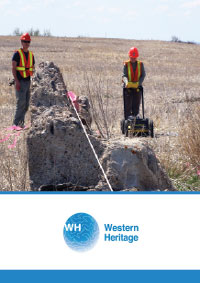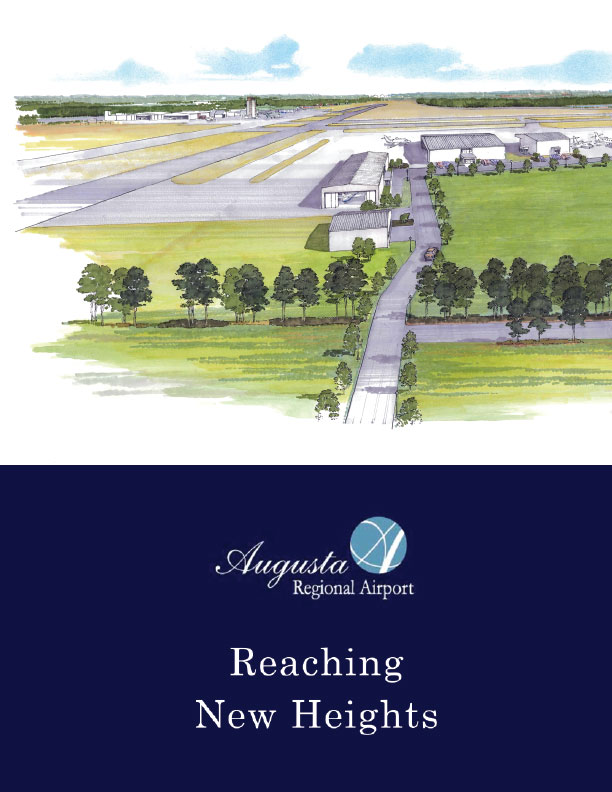Persistence in Archaeology
With locations in Ontario, Manitoba, Alberta and Saskatchewan, Western Heritage is a premier provider of heritage services in Canada and around the world. Now celebrating their 25th year, the firm got its start as part of the Saskatchewan Research Council, which focuses on applied research and development projects that generate profit on behalf of the province.
“Our company originally started in 1990,” says Senior Manager and founding partner Dr. Terrance (Terry) Gibson. “We were a working group within the Saskatchewan Research Council based in Saskatoon, which is a Crown research corporation.”
Before long, the SRC was reassessing their involvement in the industry, and started looking at companies to be spun off into their own entities. With support from the SRC, Western Heritage was born.
“In 1990, the Saskatchewan Research Council was looking for groups that might be candidates to be privatized,” Terry continues. “We were the first candidate to come up and they worked at privatizing us, and we became Western Heritage Services Inc.”
“We were originally based in Saskatchewan, where our head office is now” he explains. “But we also started doing work in other provinces; Manitoba and Alberta in particular. In 1999, I actually moved to Alberta. I moved there and I opened up the St. Albert office, originally out of my home, and then I expanded into the Northern Alberta Business Incubator before moving to a full office.”
With offices established in Calgary, Grande Prairie, Saskatoon, Regina, Winnipeg, Thunder Bay, and at one point Prince George, Western Heritage have diversely spread themselves across western Canada. Each office is equipped with leaders who have a solid understanding of their work area, and as a result, their service is highly attentive and personalized to each client.
“We like to establish people who know their region on the ground and have an established footprint there,” Terry says. “We can service any of our clients directly with personal service.”
Their staff are well-versed in all aspects of heritage studies, such as: historic and pre-contact archaeology, project management, Geographic Information Systems (GIS), Near-Surface Geophysics (NSG), geo-archaeology, community engagement, predictive modeling, archival research, oral history, land claims and traditional land use, artifact cataloguing and analysis, specialized software development, computer graphics and desktop publishing, public education and interpretation.
With a talented staff, Western Heritage is well-equipped to take on projects of all sizes.
“Our projects are tremendously varied in scope and size,” he says. “Some of them are simple, one person desktop studies that may take a day or two, other projects are multi-year and they require a number of individuals.”
“For instance,” Terry continues. “When we did work in Thunder Bay on a major highway rerouting project, we worked there for three years and our average staffing levels on that project varied between 35 and 50 people; plus 10 or 15 working in the lab.”
Along with short-term and long-term projects, Western Heritage also handles a number of clients who require annual service.
“Those are huge scope projects,” Terry says. “But we also do ongoing annual work for companies that we have developed relationships with over the years. We assist companies in complying with the historical resources regulations where they operate.”
Tech & Safety
Over the years, Western Heritage has been a firm committed to advancing within their discipline, including the development of new applications which aide in data collection and mapping. The latest initiative to come from the company involves tracking environmental change.
“An development on the geomantic side is our footprint monitoring initiative,” Terry explains. “Basically, we use satellite imagery as a platform for monitoring environmental change of a landscape over a broad area.â€
“It’s a special web-based application that we’ve developed,” he continues. “We’re currently working with some partners to test it out in the oil sands region of North Eastern Alberta. It’s a considerable amount of research development.”
In addition, their technological innovations and new methodologies have led to the company becoming a greener and cost efficient operation, according to Terry. The data recorded using technology has proven more effective than paper.
“We’ve developed a lot of mobile mapping applications for our own data recording,” he says. “We don’t have to use paper anymore and we found that saves about 20% of the costs to our client simply by adopting a new methodology. Using iPads and iPhones to record data, rather than writing things on paper, we’ve enjoyed much better data collection.”
However, technical advancements are not the only focus for Western Heritage. Safety is an important factor which they take a great deal of pride in, and it also has an effect on how Western Heritage chooses companies to work with.
“Our staff does go into areas that are remote,” Terry says. “They’re working within an industry that has traditionally had higher than normal risk factors. We try to protect our staff as much as possible and we particularly work with companies that have a high regard for safety, because it’s compatible with us.”
In order to achieve the standards of safety they require, Western Heritage rely on regular safety audits and committees to gather feedback from their staff on how things can be done better and safer.
“We’re engaged in a pretty rigorous safety program,” he continues. “We do annual safety audits of all the offices. We have safety committees, which staff participate in. We do request a lot of employee feedback.
The Future
As Western Heritage has moved forward, their focus on marketing has increased steadily. Influenced by their desire to offer their services to a range of different customers, the firm has taken on a marketing manager, which Terrance explains is a bit of a rarity in archaeology in Canada.
“In the past couple of years we have really moved into the major focus on marketing,” Terry explains. “We have a marketing manager now; I don’t think any other archaeological firm in Canada has a marketing manager. We decided that what we have is worth offering to a wider variety of clients, and archaeologists are not natural marketers, they’re more focused on the discipline. We realized that, if we’re going to get our advantages across, we had to make a fairly significant effort to market.”
Looking towards the future of Western Heritage, Terry wants to encourage long-term employees to start taking control of the company, as he believes in their ideas.
“I’ve been working with Western Heritage for 25 years now,” Terry says. “I’d like to see some succession, for the staff that have put in a lot of effort and have been around a while to actually take the reins of management.
“That’s what I want to see over the next five years,” he concludes. “A new generation will have their own ideas, we want to encourage them to take it forward and do better than us. And take Western Heritage in their directions and in a very positive manner.”









